Snow Blower
Testing Snow Performance’s Comp One water-meth system on a 2014 Shelby GT500
By Steve Turner
Photos courtesy of Snow Performance
We absolutely love power-adders. When Ford made factory boost mainstream with the Terminator in the early 2000s, it really changed the aftermarket bolt-on performance landscape. Certainly superchargers were part of the consciousness, but when SVT brought them to the Cobra, they entered the mainstream.

Plain and simple, boost works. Multi-valve modular engines, in particular, seem to blossom when you force-feed them air. Of course, if a little boost is good, a lot must be better, right? Yes and no. As you ramp up boost, you can also decrease a blower’s efficiency and add a lot of heat. More heat means running less ignition timing to avoid detonation. Reduced timing, means reduced power.
Now, there are many ways to cool down boost and strike a better balance. Some add larger intercoolers, while others resort to running race gas. Matt Snow has long been a proponent of chemical intercooling. He and his company have developed a whole line of water-methanol injection systems under the Snow Performance banner. For gasoline engines, the headlining product in the Snow repertoire is the Comp One-G system.

“The Comp-One is really the next evolution of water-methanol injection. We realized that many wanted a comprehensive system that would take all the guesswork out of it. Now you don’t have to go to a dyno and have a shop retune to realize the full potential of your water-methanol injection system—plug and play,†Matt explained. “A performance water-methanol tune is included. Also, so there’s no need to buy a separate programmer, water-methanol injection system, gauges, diagnostic code readers, and a G-tech—the Comp-One has them all.â€
Looking for an appropriate test bed for this system, Matt and company opted to try it out on Ford SVT’s latest bad boy, the 2014 Shelby GT500. With a TVS-supercharged Trinity 5.8-liter engine underhood, this GT500 is the baddest factory-built Shelby to hit the streets so far. Its OEM supercharger configuration makes it an ideal candidate for modifications, and cooler inlet temps.
“Along with the above, Ford engineered many engine safeguards into the new GT500. Along with closed-loop knock control, the car is extremely sensitive to heat. The intake air temp and engine coolant temp maps aggressively pull timing with temp increase resulting in large power losses when heat-soaked. Also, if temperatures or other key values are extremely high, the car will actually open up the supercharger bypass valve to lower boost immediately, which we experienced while experimenting with heat soak and many back-to-back dyno runs,†Matt said. “Water-methanol injection keeps IATs and other values low so the engines computer keeps all the timing and boost in the car for max power all the time. How does tuning for a water-meth system differ from traditional tuning strategy?â€

Because of its combination of modern fuel injection and supercharging, the 2014 GT500 was particularly suited for the technology offered by the all-in-one Comp One system.
“The fact that the Comp One uses both Boost and Fuel injector pulse width in modulating water-meth injection is important for positive displacement supercharged applications like the GT500. These get full boost at such low rpm that if boost alone is used; it results in over injecting and loss of drivability in lower-to mid rpm. This system uses a 2D map where one can weight the map to inject more from fuel-injector pulse width (correlates to horsepower) rather than just boost for smooth power,†Matt explained. “Also, it commands two nozzles independently, typically a small nozzle is brought in early and a larger nozzle later when the engine can take the volume. This results in a wider range of injection with the greatest amount of cooling and detonation control.â€

In addition to the traditional before-and-after dyno testing, which took place at Rocky Mountain Competitive Research, Snow wanted to further document the benefits of injecting water-meth on a blown Mustang. As such, the employed an interesting imaging technology from FLIR Systems, Inc. to illustrate the blower-case temperatures.
“The FLIR Thermal Imager allows us to see the temperature differences graphically with and without water-methanol,†he said. “Before, we had to have people actually touch the intake after water-methanol injected dyno run to get the same effect. The intake is actually cold to the touch.â€
Certainly it must be impressive to feel a cold blower housing after a run, but what most of us want to see are performance gains, and the Comp One system certainly delivered on this car. As Ford begins to move its factory power adders into the turbo realm, we couldn’t help but wonder how a system like this might benefit an EcoBoost Ford.

“We have been working on an EcoBoost F-150 and have our system ready for SEMA. The system uses a new injection strategy that includes boost, injector signal, and fuel pressure. Without giving key info, we found also that this engine requires a revised injection site. It responds well to water-meth as it has the same sensitivity to pulling timing with heat,†Matt said. “The beauty of this is these actually tune themselves. The PCM keeps bumping the timing threshold until slight spark knock is experienced. We have seen over 40 horsepower by just putting this on with no tuning required.â€
That certainly sounds like an interesting story for another time. For now, enjoy the results of Snow water-meth on a GT500 (with bolt-ons from AmericanMuscle.com) as installed by Colorado Speed Company in Colorado Springs, Colorado.

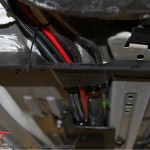
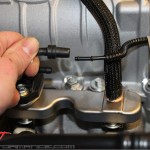
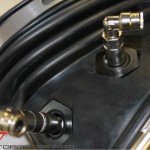
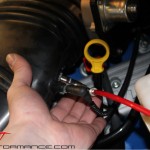

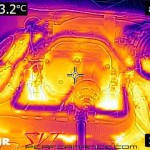
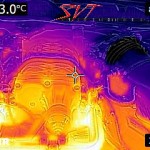
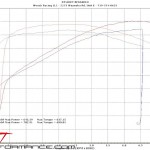
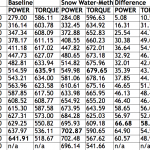
The FLIR images are great. You can tell by the engine coolant hose that the motor was working. I’ve been thinking about adding a Snow kit to the SVTP F-350, this makes me think even harder.
That is a neat tool. They even have a FLIR setup for iPhones.
I may need to invest in one. It would help diagnose certain engine problems.
Great writeup!
Thanks!
how much timing did they add to take advantage of the meth?
25 degrees at WOT
I must be old. I remember when 15 degrees at WOT was pushing it.